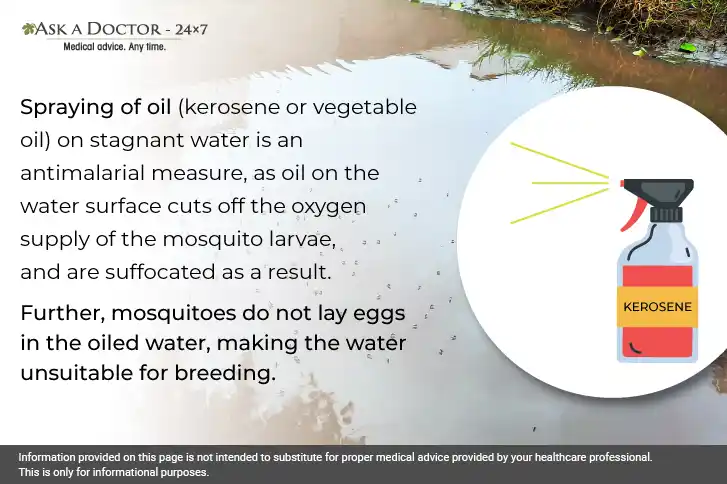Decoding The Link Between Climatic Change And Increasing Incidences Of Malaria
Mosquitoes are more than just annoying nuisances that cause summertime insomnia. These small insects can transmit dangerous diseases such as malaria, dengue, and chicken guinea. Among these malaria is the most common one, which kills over a million people annually. The likelihood of infection and the intensity of transmission vary greatly by region. Most cases of malaria are found in tropical and subtropical areas of Africa, Asia, Oceania, and Central and South America. Asia.
Changes in climatic factors, such as higher temperatures and greater rainfall have an impact on the behavior, development, and dispersal patterns of insects like mosquitoes. The risk of malaria is thus increased by these higher temperature frequencies. This is because the malaria parasite and mosquito thrive in temperatures between 17°C and 35°C. Warmer temperatures allow vector mosquitoes to grow more quickly, colonize new areas, and disperse diseases that are carried by vectors. Furthermore, more rainfall may lead to an increase in the number of locations where mosquito vectors reproduce. A breeding ground for vector mosquitoes, such as those that carry malaria, is any temporary or stagnant body of water. Let us understand how climate change affects mosquito behavior and ways to prevent mosquito bites.
How Change of Weather Variables Can Cause Malaria?

There is a strong correlation between environmental events and the transmission of malaria. Changes in temperature, rainfall, relative humidity, and other environmental conditions have an impact on the significant elements that determine the transmission of malaria, such as the lifespan of the mosquito, the growth and proliferation of malaria vectors, and the development of malaria parasites in the insect.
Mosquitoes thrive in warm and humid weather, temperatures ranging between 27°C to 32°C being most favorable for their development and activity. During summers, heat enables them to reproduce more quickly, bite more frequently, and spread into previously inappropriate areas. As a result, mosquito larvae will mature into adults more quickly. They also prefer high humidity levels, as it prolongs their lives and facilitates more effective reproduction.
Temperature also has a major impact on how the malaria parasite develops inside the mosquito. The parasite cannot finish its life cycle inside the mosquito at temperatures below 17°C and above 35°C. This stops malaria from spreading further. Mosquitoes are cold-blooded insects and their activity and metabolism slow down significantly in cold weather. Mosquitoes become lethargic at temperatures below 10°C, making it difficult for them to fly, mate, or feed. Their breeding grounds, such as ponds and other sources of stagnant water, are similarly impacted by the cold, which lowers the likelihood of successful reproduction.
While at a lower altitude where malaria is already an issue, warmer temperatures will change the parasite's life cycle in the mosquito, allowing it to develop more quickly and increase transmission, which will have an impact on the disease load.
Also, an increase in temperature, humidity, and rainfall helps the mosquito population to proliferate at higher altitudes. As a result, the disease's geographic range is expanding, enabling it to spread to previously unsupported mosquito populations in new areas.
Rain-induced puddles and overgrown grasses contribute to an increase in mosquito populations during the monsoon season. Rainfall can form stagnant water puddles and potholes, which are perfect mosquito breeding grounds, causing an increase in the number of mosquitoes.
Prevention of Malaria

To protect yourself from mosquito bites, one must do the following:
- Wear protective clothing. Put on long-sleeve shirts and trousers.
- Apply skin-safe mosquito repellant cream onto your exposed skin.
- Use coils and vaporizers.
- Use window screens.
- Put repellant on your clothes. It is safe to use permethrin-containing sprays on garments.
- Sleep under a net to shield from mosquito bites.
Prevent the breeding of mosquitoes by doing the following:
- Eliminate the breeding place of mosquitoes at your home by clearing stagnant water in coolers, tires, pits, etc.
- Avoid overwatering plants. Also, empty water collection pans for plants.
- Repair or prevent water leaks.
- Cover water storages, clean gutters, and fill or drain puddles.
- Declutter and get rid of junk.
- Change the water in pet drinking bowls, bird baths, and vases frequently.
- Disinfect aquariums.
- Mow your lawn frequently as mosquitoes tend to hide in tall grasses.
Conclusion
We have learned so far that malaria exists as a very immediate threat that causes huge numbers of preventable deaths every year. The influence of climate and environmental changes on malaria is a significant threat that could be prevented with the right action. You can lower your chance of infection by avoiding mosquito bites and eliminating their breeding by clearing stagnant water and clutter from your home. Treatment for malaria must begin as soon as possible. Your healthcare professional will recommend drugs to eradicate the malaria parasite. Malaria, if left untreated, can cause fatal damage to your organs. Thus, if you experience any symptoms, consult a doctor and get tested.
If you have any questions about malaria and other insect-borne diseases, you can Ask a Primary Care Specialist at Ask a doctor, 24x7.
Recently Answered Questions Related to Malaria and Mosquitoes Borne Disease
- Should I Take Falcigo Sp Kit As I Have No Malaria?
- What Causes Persistent Malaria Symptoms After Treatment?
- What Causes Persistent Fever And Pus Cells In Urine Despite Medications?
- What Causes Low-Grade Fever And Severe Fatigue When Diagnosed With Malaria?
- What Causes Fatigue, Weakness, and Dizziness?
- Taken Malarone To Avoid Malaria. Could This Be The Reason For Delayed Periods?
- What Causes Headache And Body Swelling After Yellow Fever And Malaria?
- What Causes Painful Skin Boils After An Insect Bite?
- Can Brain Tumor Be Transmitted Through The Bites Of Mosquitoes?
- What Do High Metamyelocytes With Fever, Muscle Pain And Stomach Indicate?
Disclaimer: Information provided on this page is not intended to substitute for proper medical advice provided by your healthcare professional.
Ask a Specialist
Recent Questions


